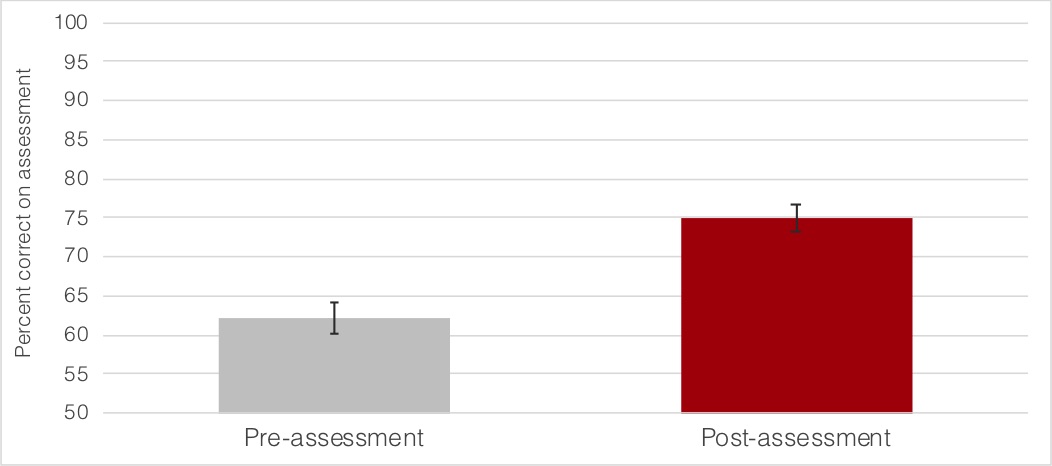How Can Information Literacy Be Taught Effectively in Large Lectures?
Carefully designed active learning improves information literacy across disciplines. |
EUREKA! Mellon College of Science First Year Seminar Course
The instructors of a large freshman seminar course for all majors in the Mellon College of Science invited Gainey and her colleagues to teach information literacy. The large interdisciplinary group of over 300 students presented a challenge. How could instructors create engaging and relevant content across different disciplines? Gainey and her colleagues designed their lessons to include multiple forms of active learning. During the large lecture session, they used DirectPoll - a free tool that allows a presenter to interact with an audience in real time – to provide practice with information literacy concepts related to scholarly information, peer-review, databases, and advanced search strategies, regardless of discipline. During smaller recitation sections (20-25 students), students completed an “information scavenger hunt” activity that provided additional practice to reinforce concepts learned in the lecture. Both strategies familiarized students with information literacy concepts that are common across disciplines, but allowed students to work through examples within their discipline of choice. To measure learning, the instructors designed a pre- and post-assessment, administered before the large lecture and at the conclusion of their recitation sections.
Students showed significant learning gains from pre-to post-assessment. Instructors used this data to inform a subsequent iteration of the lesson. Gainey and her colleaguesredesigned some of the activities to target areas where students struggled. Additionally, data from the first iteration of the lesson was used to redesign the assessments. In the second iteration of the lesson, students demonstrated significant learning gains from pre-to post-assessment.
Moving forward, Gainey and her colleagues will use these and similar assessment tools to systematically evaluate the effectiveness of other active learning exercises and design additional interventions.

Figure 1. Students scored higher on the post-assessment following the active learning sessions (M = 75.05, SD = 12.83) compared to the pre-assessment taken prior to the class (M = 62.13, SD = 11.99). Error bars are 95% confidence intervals for the means. The mean difference of 12.91 was statistically significant, 95% CI [15.29, 10.53], t (181) = 10.71, p < .001, d = 1.04.
Filters in which this Teaching as Research project appears:
College: Libraries
Course Level: Intro Undergraduate
Course Size: Large (more than 50 students)
Technology Enhanced Learning
